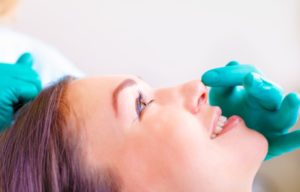What to Expect from a Rhinoplasty Procedure

What’s the right age for a rhinoplasty?
This is a question that comes up very frequently about this procedure. One of the unique aspects about a rhinoplasty is that the age range for it is very wide. Many other plastic surgery techniques are typically performed for people in specific age demographics. However, a rhinoplasty is performed within a range of patients who vary from teenagers to individuals who’re past their middle age years.
Truthfully, there is no right age for this procedure. For younger rhinoplasty patients, it’s crucial that facial features are fully developed to create the best possible results. This typically occurs in the late-teens. However, the only way to safely determine a patient’s candidacy for a rhinoplasty would be to participate in an in-person consultation with an experienced board-certified plastic surgeon.
Issues that a rhinoplasty can address
Rhinoplasties are perhaps most notorious for fixing nose “humps” to create a more angular and shapely form. This is just one of the physical changes that can be successfully performed. There are three components to the nose that can be altered: skin, bone and cartilage. Dr. John LeRoy can strategically adjust each of these features to improve size, shape and symmetry.
A fantastic final result always begins with a detailed in-person plastic surgery consultation that thoroughly considers your desired outcome while maintaining a realistic and safe approach. Some common grievances about the nose include:
- A nose shape that is overly wide
- A nose tip that bends downward
- Nostril size
- Tip of the nose size
- A bend or “hump” in the nose
- A nose that is too long or far from face
- Crooked shape
The post-operation process of a rhinoplasty
After the rhinoplasty procedure is completed, the post-operation process must be taken seriously to ensure that you have the best possible results. It’s strongly recommended that patients get as much bed-rest as they can. When lying down, it’s important to have your head elevated to reduce swelling. Your nose will be bandaged and securely taped & supported to allow for a successful healing process. The length of time in which you’ll wear this supportive material will vary by the type of rhinoplasty, but it generally takes less than a week. Dr. John LeRoy will provide specific details about further protection and pain relief throughout the process.
If you have any questions about rhinoplasties or would like to schedule an appointment, call our office at 404.843.0840. Don’t forget to follow us on Facebook and Twitter for more plastic surgery information and updates about our monthly specials on cosmetic procedures.
